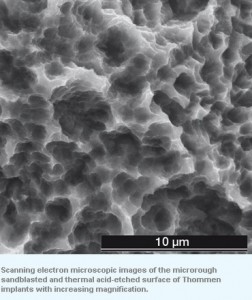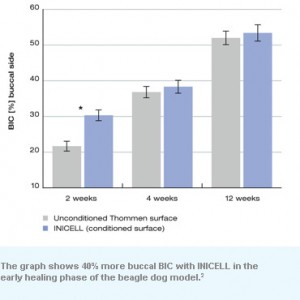Advancements in Dental Implant Technology
While dental implants have been used for permanent tooth replacement with great predictability since the 1960’s, innovations and scientific advances in dental implant technology continue to make them the single most successful and long-lasting treatment option for missing teeth.
Patients who are educating themselves on what dental implants are and how they work should be concerned with some very important facts about dental implantology. It is a good idea to understand some basic clinical information when considering dental implant surgery.
What is a Dental Implant?
A dental implant is a medical grade titanium post which is implanted into the jawbone in order to replace one or more missing teeth. The implant itself is about the size and shape of a natural tooth root. An attachment, called an abutment, extends above the gum tissue in order for a cosmetic dentist to build a dental implant crown upon the implant.
How do Dental Implants Work?

Dental Implant Surface (Thommen Medical)
Once inserted, a dental implant must heal within the bone through a process called osseointegration. This process involves the direct functional and structural connection of bone to the dental implant surface. In other words, osseointegration makes the dental implant tight in the jaw bone. A dental implant cannot be utilized for function (loaded) until osseointegration has occurred. To do otherwise increases the risk of dental implant failure significantly. Since the success of a dental implant depends heavily on osseointegration, it makes sense that it is desirable to have this bone healing occur as quickly as possible.
Innovations in Osseointegration of Dental Implants
Since the 1960’s, dental implant technology has undergone some very important innovations. Perhaps the most important technological advance in implant dentistry has been the use of the sandblasted/acid-etched titanium surface. The process of etching the surface of an implant essentially “roughs it up” on a microscopic level. This rough surface increases the surface area of the dental implant itself, giving it more points of contact with the surrounding bone. Sandblasted and acid-etched dental implant surfaces have long been considered the “gold-standard” for promotion of osseointegration. Since the adoption of this surface, the success rate for dental implants has increased to over 97%. Thommen Medical’s dental implant system utilizes a technology that takes osseointegration one step further. The 2009 introduction of the Inicell ® dental implant surface conditioner has been shown to speed up the process of bone healing following dental implant placement. The Inicell® conditioner contains hydroxide ions (OH-), which increase the surface energy of the dental implant and promotes faster absorption of proteins on the dental implant surface. The surface of the implant becomes hydrophilic (water-attracting) .
A hydrophilic dental implant surface draws liquid toward it, rather than repelling liquid. When a conditioned dental implant is inserted into the bone, blood will be drawn to it, completely covering the surface of the implant and creating a protein “film” on the complete surface of the implant. When blood supply around the implant is increased, a more beneficial blood clot forms, which provides the matrix for healing and new bone growth. The Inicell® conditioner on the sand blasted/acid etched dental implant surface gives the bone a head start on healing.
What are the Benefits of Thommen Inicell® Dental Implants?

Bone healing with Inicell
Some very important things happen with predictable consistency when Inicell conditioner is used on a dental implant.
- Continued increase in stability during the first 8 weeks following placement
- Higher implant stability during the early healing phase
- Higher bone-to-implant contact in the early healing phase of 2-4 weeks as well as with immediate placement protocols.
- 40% increase in bone to implant contact
- Earlier “loading” of a dental implant (sometimes as early as 3 weeks)
Dr. Robert Weinstein uses Thommen Medical’s Inicell Dental Implants almost exclusively in his practice, and has used them for the past 10 years with 97% success. When considering implant dentistry for tooth replacement, it is important to consider many factors. Researching the dental implant system used by your surgeon is a good idea. The implant system used should be a part of your decision making process, along with a surgeon interview/consultation, fee research, and understanding all of your treatment options. Your dental health is important, becoming an informed patient will help you make the best decisions about your dental care.
For more information of Thommen Medical, click here. For more information about dental implants, click here.

